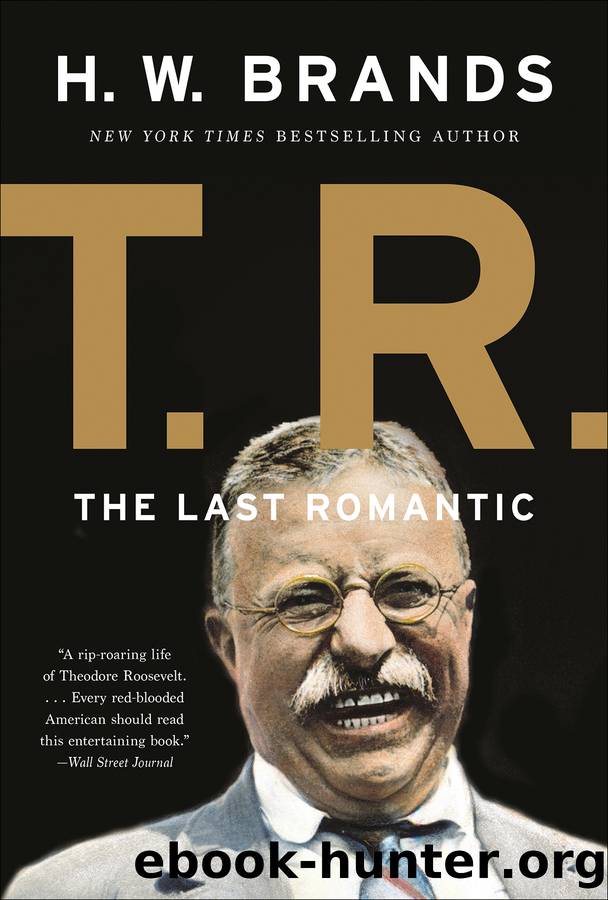T.r. : The Last Romantic (9781541618039) by Brands H. W

Author:Brands, H. W. [BRANDS, H. W.]
Language: eng
Format: epub
Publisher: Hachette Book Group USA
Published: 2019-07-23T00:00:00+00:00
V
While Rooseveltâs baiting of southern Democrats was deliberate, his antagonizing of another groupâAmerican Catholicsâwas accidental. Events in the Philippines triggered this controversy as well. In pursuit of McKinleyâs astonishing pledge to âChristianizeâ the Filipinos, American administrators in the islands discovered what anyone with any historical perspective already knew: that the job had been done long before by Spanish missionaries. In bringing (Catholic) Christianity to the Philippines, the Spanish friars had simultaneously acquired title to large tracts of Philippine real estate. The current American governor-general, William Howard Taft, recalled that popular antipathy to the friars had helped precipitate the anti-Spanish rebellion that preceded the American occupation, and in any event he desired to remove this vestige of European feudalism. Taft and his associates sought to break up the religious ordersâ estates by purchasing them and redistributing the land to the peasants who worked it. This would simultaneously serve the second purpose of encouraging the Spanish friars to go back to Spain; American priests would take their place.
Unfortunately for Taft, and for Roosevelt, the friars resisted this encroachment of the temporal sphere into what they interpreted as the realm of religion. They appealed to the pope in Rome for support, and their appeal echoed among American Catholicsâa largely Democratic constituency and one always difficult for Roosevelt. As usual Roosevelt had trouble finding any merit in his opponentsâ case. He told Archbishop John Ireland that he was âvery indignantâ at the Catholic criticism, not least since his administrationâs policy toward the friars followed suggestions by Ireland himself. To another Catholic acquaintance he declared, âI am pained and concerned to find that a large number of Catholics seem to feel that the movement to get rid of the friars is in some way a movement against the Catholic Church by the government at Washington.â Nothing could be further from the truth. It was the fact that the friars were Spanish, not that they were friars, that was the source of the problem, for the Filipinos had an historical hatred of the Spanish priests and still harbored âthe most bitter indignationâ against them. âIf only these Spanish friars could be taken away, then their places can be at once taken by friars of other nationalities or by other orders of priests to whom the people will listen.â As always his administration had nothing in mind but the best interests of the Filipinosâthe great majority of whom were, of course, Catholic. âWe have been endeavoring in all these matters to meet the wishes of the catholic population of the Philippine Islands.â
Roosevelt grew more irritated the more he thought about the Spanish friarsââa lecherous lot of scoundrels,â he called them in a less diplomatic momentâbut upon due reflection he determined to approach the problem calmly, and in the spirit of J. P. Morgan, of all people. He sent his man, Taft, to see the friarsâ man, Pope Leo XIII. Taft found the pontiff surprisingly agreeable. âThe old boy is quite bubbling with humor,â he noted afterward. âHe was as lively as a cricket.
Download
This site does not store any files on its server. We only index and link to content provided by other sites. Please contact the content providers to delete copyright contents if any and email us, we'll remove relevant links or contents immediately.
Blood and Oil by Bradley Hope(1531)
Wandering in Strange Lands by Morgan Jerkins(1374)
Ambition and Desire: The Dangerous Life of Josephine Bonaparte by Kate Williams(1347)
Daniel Holmes: A Memoir From Malta's Prison: From a cage, on a rock, in a puddle... by Daniel Holmes(1295)
It Was All a Lie by Stuart Stevens;(1265)
Twelve Caesars by Mary Beard(1258)
The First Conspiracy by Brad Meltzer & Josh Mensch(1140)
What Really Happened: The Death of Hitler by Robert J. Hutchinson(1131)
London in the Twentieth Century by Jerry White(1114)
Time of the Magicians by Wolfram Eilenberger(1091)
The Japanese by Christopher Harding(1086)
Twilight of the Gods by Ian W. Toll(1085)
Cleopatra by Alberto Angela(1063)
A Woman by Sibilla Aleramo(1055)
Lenin: A Biography by Robert Service(1046)
The Devil You Know by Charles M. Blow(987)
Reading for Life by Philip Davis(974)
1965--The Most Revolutionary Year in Music by Andrew Grant Jackson(925)
The Life of William Faulkner by Carl Rollyson(925)
